The Meaning Of Tsundere: What’s Really A Tsundere?
Considering the many anime character types, the true meaning of tsundere often gets lost and we’re left wondering – what’s really a tsundere? What is the definition of tsundere?
Well, you can check out our male dere types to get a taste, but let’s start off with a question: if Tohsaka Rin (F/S Night) and Michiru Matsushima (Grisaia) are both defined as tsunderekko, then why do they seem so different?
The Meaning Of Tsundere
The beauty is in the details. The definition and meaning of the term “tsundere” has actually changed quite a bit over the past few decades (and arguably for the worse). The most amazing thing about cultures is the natural and gradual change of their parts to suit and be understood by the whole. First off, let’s begin with the definition we use for tsundere.
The term is a portmanteau of the two Japanese onomatopoeias tsun tsun (ツンツン), which describes sharp and prickly attitudes, and dere dere (デレデレ), which elicits the feeling of infatuation and being lovestruck.
This basically means that regardless of when and where it happens, a tsundere very loosely means having those two traits, tsun-tsun and dere-dere at some point in time. Looking at the two examples, both Rin and Michiru definitely have both of those traits. But what is the difference…
What’s Really A Tsundere?
Well, I’ve come up with two definition that can help us compare and contrast the two types of tsundere: The Classic and the Neo:
1. The Classic Tsundere Definition

In Rin’s case, she is very hostile and distant from Shiro at the beginning of the Holy Grail War. She even goes as far to tell him that she will defeat him as soon as possible and attacks him pretty early on. But as the story progresses, her attitude changes (for the better) and she becomes a lot more attached to Shiro. As the relationship develops, Rin falls for Shiro and her tsun-tsun side slowly becomes less pronounced as the dere-dere kicks in. She actually falls for him so hard that she is even willing to throw away her chance at the Holy Grail to save him – now that’s some dedication for a girl who was all tsun-tsun at the beginning!
This is the type of personality which we define as tsundere, or more recently called “classic tsundere” to avoid confusion with the second type. (note, Rin is not the furthest left on the classic spectrum, but I felt like she was a good example to use in this discussion)
2. The Neo-Tsundere Definition
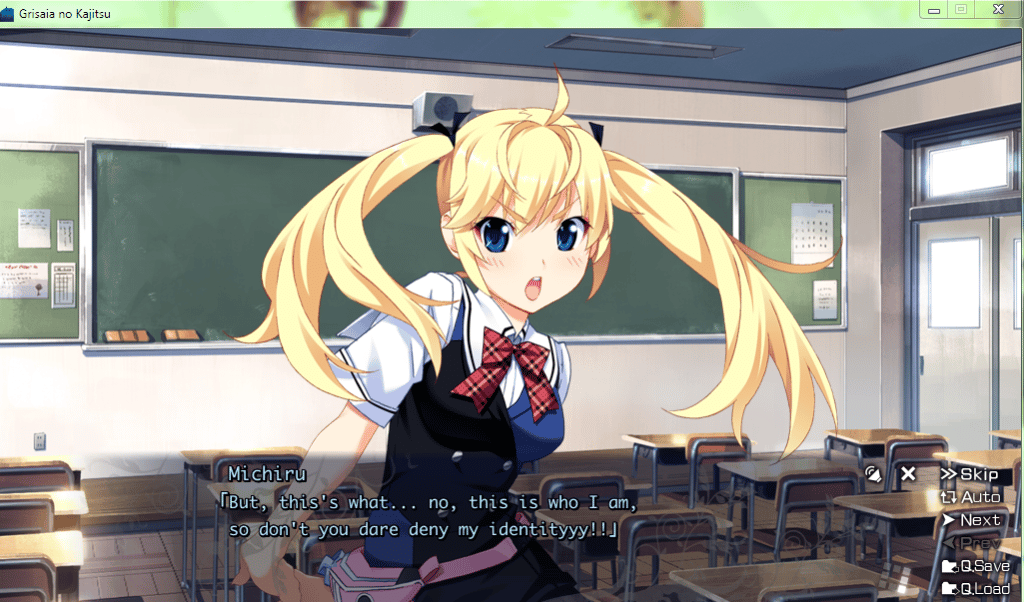
With Michiru, there’s a lot less explaining that needs to be done. First of all, we figure out at the VERY BEGINNING that even she thinks of herself as tsundere when Yuuji catches her reading tsundere flashcards (seriously!?). From then on, almost every interaction with her comprises of some sort of tsundere-like banter between those two. She will constantly act very pompous and aggressively defend her position, but then ultimately be defeated in an episode of embarrassment and general failure. It is actually a lot more apparent in the Visual Novel, but well, what can you really expect from a single cour run?
Anyways, Michiru is definitely tsundere, but not the same type as Rin. The common label for this type is “neo-tsundere”, which has a different meaning for reasons that’ll be described next.
A Tale Of Twin Tails
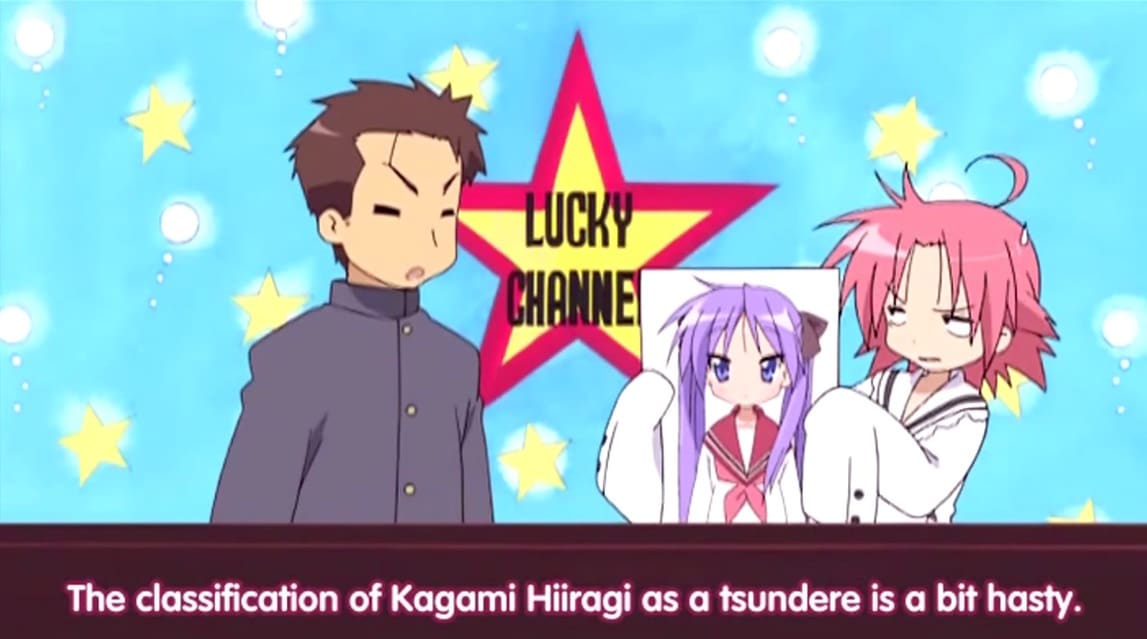
Get it? Heh.
Anyways, the difference between these two types? The best explanation is given by Shiraishi in Lucky Channel episode 10. To quote,
The original term was defined as a character who starts as tsun-tsun and eventually becomes dere-dere. Yes! This means that it was supposed to describe a change over time! And now.. it is used to describe the multiple faces of a character. In other words, tsun-tsun on the outside, and dere-dere on the inside would be how the word is currently understood.
So what does this mean? Well, nothing bad or crazy honestly. This is simply the natural progression of anime driven by media interests and the drive to use the definition for anything and everything that is even remotely possibly tsundere. The fact is that tsundere sells. Look at any media or social campaign which has to do with anime and there is a very high chance you’ll see this buzz-word. Heck, even if the characters are not actually tsundere there might be some sort of ploy to attract people with the meaning of the word! But why is tsundere so popular?
Why Is Tsundere So Popular?
I’d say that it was because of half tsun…, and half… dere! Let’s go back to the origin of everything — where it all started: moe.
Moe embodies the feeling of attraction or cuteness in a character or even a person.
The Meaning Of Moe
Moe was a concept introduced in the 1990s, back in the days of manga and early 2ch to describe that feeling so that there would be common ground when discussing certain characters. The word is said to have come from 萌え, a form of the word 萌える(to burst into bud/sprout) and also a homonym of 燃える(to burn). Look it up on Wikipedia or Google if you want some interesting discussion on the origin!
I feel like the main reason it stuck is the same reason why people like cute things. The very core of moe in anime is to illicit those feelings of attraction to cute things, so who wouldn’t expect it to stick? From the success of moe in anime sprung up many other similar terms to describe exactly why these moekko are.. so moe. One such explanation is gap-moe (and no gap-moe does not mean AM I CUTE UGUU~).
Gap-moe is a particular type of moe which derives its value from a “gap” in the character’s personality.
Moe In Anime
Just as Sora exclaims in NGNL, “MOE WA SEIGI!” And I fully agree, but there’s more to it than just being “cute”. Ok, cute things are cute,… but that’s all. It doesn’t tell you anything about why they are cute. Cuteness could mean looks, personality, or even the situation they are in! Initiative, Intelligence, Perception, Perseverance, Athletic Ability, etc matter a great deal. If all of the moekkos in the world were just cute, I would eventually get bored.
What Is Gap Moe?
I think that it was a similar train of thought that led people to gap-moe in anime — the unexpected moe. A mean girl that is actually sweet on the inside? A cute girl that is actually a terrible person? A smart meganekko who is not actually smart?! Seriously, whoever thought that people would like gap-moe was a genius. And from that genius sprung the tsundere definition.
Tsundere As A Story Element
But there is another aspect to why classic tsundere are the way they are which aligns with Shiraishi’s explanation (in my opinion). Although moe and gap-moe were beginning to surface as popular personality traits, they were never considered the main driving factor behind the work, be it manga or anime (but especially manga). Typically the main attraction to a story is.. well… the story!
This means that the trait had to be baked into the story as you would normally handle character development. And obviously, the best way to do this was with a love interest that had some sort of conclusion near the end. This meant that a tsundere started out tsun-tsun at the beginning of the story and ended up dere-dere over the main love interest by the end. This is the classic tsundere definition.
But as they became more popular and the media giants realized that tsundere was gaining popularity, they put in a lot more effort in having them stand out as characters aside from the overall plot and really push the meaning in your face. And of course, execution really matters and that is where things changed. What is the easiest and quickest way to sell a tsundere character in the first episode?… See where I’m getting at! This meant that no longer would we see the slow defrost of their personality over the series, but rather the rapid switching between the two states reminiscent of a bipolar disorder.
Neo Tsunderes In Anime
Not to hate on neo-tsunderes, because honestly I like quite a few of them, but it’s always nice to think about the deeper meaning of a character’s personality. Haven’t you ever seen anime with neo-tsunderes shamelessly thrown into the mix for no apparent reason? Did it feel like there was some sort of reasoning behind it, or did it just seem like some sort of cheap show? And more importantly, why do I like those anime so much?!

Given all that though, most characters end up somewhere in the boundary between classic tsundere and neo-tsundere definition. No bid deal though, we love them anyways.
Even with all of this, there’s still a whole ton more to discuss on the subject of tsunderekko, but let’s end it with a quote from Zetsubou sensei:
Sensei: “I’m somewhat behind these Otaku trends. Can a character be Tsundere if she never shows a Dere side?”
Harumi: “Oh yes, the Dere side can be left to the imagination so it’s a-ok if it never shows up in canon screentime.”
So Then… What Is A Tsundere?
I’ll leave you all with a thought experiment: If a character is tsun-tsun to one person, and dere-dere to another, are they still tsundere?
Define tsundere yourself and reply back with your thoughts! And make sure to check out our very own tsundere, Kiho Hiryuu!
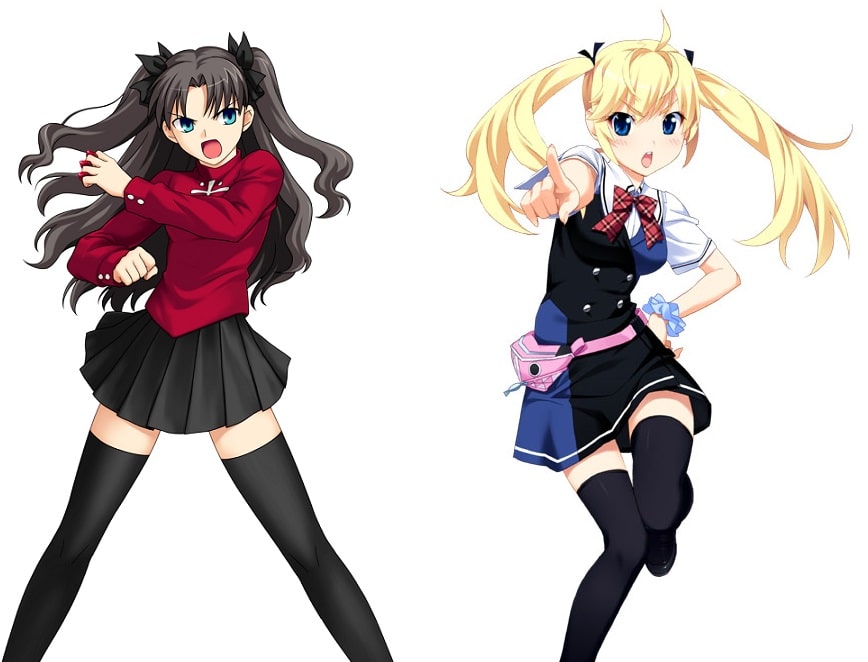
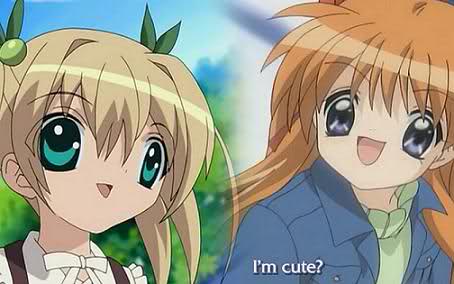

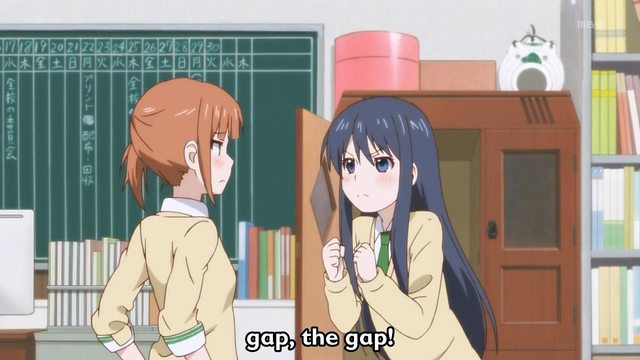

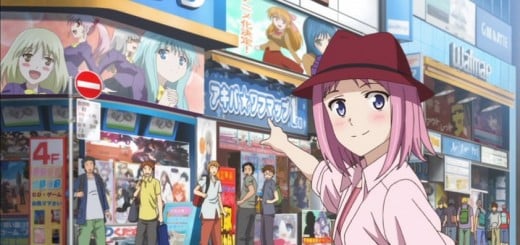
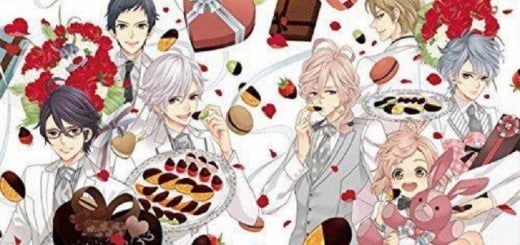
Regarding the thought experiment, I would not call them tsundere, conforming to the definition I give to the term which I’ll explain below. I heard quite a few people (females, actually) explaining they like guys that are aggressive to others but sweet to them, because it makes them feel special. Douchebags are not tsundere. 😛
My intuitive understanding of tsundere from the characters people label as such is that they hide feelings of love with hostility — “love” can be loose here, as the feelings for Konata Kagami disguises would be more of deep friendship. This definitely is the case for at least as early as Evangelion with Asuka, although I’m not sure she fell in love quite early on in the series. I would venture to guess Asuka invented or at least popularised the recipe, but this requires further research. Recently, I haven’t kept up with anime featuring tsundere so I don’t know if the audience’s tastes have evolved (alongside the archetype itself) but this is an interesting topic to explore. I wonder if Mari’s notoriously enigmatic addition to the Eva rebuilds simply reflects a diversification of moe preferences in anime fans, with more fans appreciating plainly assertive and confident girls rather than girls with an aggresseness that betrays love and insecurity.
I’m familiar with neither of the characters in the post, though I can see their personality from your description. Rin doesn’t strike me as a typical tsundere, but that may be because the earliest examples that I can come up with are not much older than the interesting dialogue you quote from Lucky Star. Haruhi, Kyou from Clannad or Rie Kugimiya characters like Shana and Louise are more like Michiru than Rin (going off your description of them). These examples, while from around Rin’s time, are still relatively recent relative to Lucky Star, though (even looking back to the source material where the characters appear). It would be interesting if we could find and catalogue more characters in Rin’s vein.
On another note, Senjougahara Hitagi is an interesting example on the topic. I think that many people call her a tsundere, in accordance with how she describes herself in the first episode; however, I am of the sometimes-held interpretation that she is not. Her playful teasing is fairly confident and straightforward and while it does cover insecurities to a slight extent, it is more of the vein of acting happy to hide scars than acting hostile to hide love. My opinion on the characters is that Nisioisin introduced her as a tsundere but turned her into something entirely different to subvert expectations, in a similar way to how Bakemonogatari’s format resembles that of a harem yet subverts the genre’s tropes in many ways (the MC does date one of the girls — and even before the harem is introduced; the romantic relationships between him and many of the girls are explored even if rejection is necessary; the MC is actually quite charismatic). Just a thought to consider for those familiar with the Monogatari series, and an example of the subversive quality I appreciate in it.
Personally, I think that Asuka didn’t even recognize Shinji until her two other love interests, Kaji and Misato (see Magma Diver for evidence), break her heart with each other. I felt like she warmed up to him out of a lack of anything truly better in her life and the despair that is ripe in that show sort of demanded it. There wasn’t really much “love” to be had there, only suffering, the warmth of a comrade and lust. I just really feel like Evangelion doesn’t really portray love as something that ends positively, only something that is warped and betrayed. Don’t even get me started on Rei. 🙂
Yes! I think your understanding of why tsundere girls are actually tsundere makes quite a bit of sense. It’s a type of awkwardness that arises from not being able to confront their feelings directly. Whether those feelings be friendship, love, or even sometimes dislike/hate (how most tsunderes act to the main love interest before they actually fall in love).
Rin is not 100% a classic tsundere, and that’s for sure. But although I say that, I think that she’s more of a classic tsundere than a neo-tsundere. I was thinking of using Naru for a better example, but I was hoping to give a more recent example 😛
One thing that I might not have stressed is that classic tsundere and neo-tsundere are not only classified by the year in which they were introduced. There are plenty of neo-tsundere which appeared before more recent classic tsundere. I just wanted to stress that there was a general movement taking place, not a clean-cut divide. You mentioned that you are not as familiar with recent anime with tsundere in them, probably because the MAJORITY of neo-tsunderes can be found in those shitty love/harem anime (which are my guilty pleasures). eg. pretty much every girl in Trinity Seven.
About Senjougahara Hitagi, you’re right in that she isn’t really a tsundere. In my opinion, I’d label her a Kuudere. (My definition being: An anime/manga personality type derived from kuu (Japanese spelling of ‘cool’) and dere dere, which describes a character who is normally cool, calm, and collected, often with a high-society family origin). I’ll probably do a bit more thought into Kuudere and whatnot and make a post sometime later, but I think it really does fit with how she carries herself. My OC, Reishi Miwa, is a Kuudere and she definitely goes down the route of acting happy and composed to hide her scars 🙂 I’ve never actually read the Light Novels so I can’t say much about Nisioisin’s rendition of her, but I don’t think she was ever tsundere to begin with (at least in the anime).
Oh man, I’d love to do a detailed analysis of Bakemono, but I think it would take a few years to cover X_X And I definitely agree that Bakemono has a certain level of quality which you don’t see very often.
Btw, great comment!
I agree with the kuudere label on Senjougahara. She’s very much the loving wife of the show. And far more forgiving than he deserves.
“Love makes you do the wacky!” all around in *monogatari. I love it, I hate it, I desire more of it. 🙂
I prefer the Rin type myself. I don’t especially like the “violent for the sake of violence” type. It can be amusing, but I’d rather see the character grow without the need for cartoon violence.
To be honest, one of my first tsundere experiences was with Naru from Love Hina. I prefer manga-Naru, and headcannon Naru tbh, but the anime version does dip deeply into the violent tropes. This works, in the universe, but I don’t believe I could really like a girl who beat me to the extent she does Keitaro unless I was truly masochistic. Of course, Akamatsu-sensei delivers Motoko to provide the sort of tsundere I prefer so it all works out in the end.
Of course, my ending for Love Hina, headcannon version of course, is a large true-harem with three haremers (Naru, Mutsumi and Keitaro) at the top with the other girls being bedmates and lovers of all three in a sort of strange otherworldly deeply passionate and loving family. 🙂
Yup, the Rin type has much more potential for a good story (and makes sense because it’s story based). But that’s the problem — a shitty story means a shitty tsundere! The neo-tsunderes are a bit more standalone, and may be annoying at times, but can also be a great source of comedic relief.
LOL at your optimal Love Hina ending xD
Even a tsundere written for the best “tsundere voice actress” can be ruined by a terrible story. I’d say the best example of a waste of a beautiful tsundere is Dragon Crisis, where Rie Kugimiya goes all out in her role but the plot is so terrible that even a brilliantly voiced tsundere becomes painfully terrible to watch.
Even the Queen of Tsundere couldn’t save it ;_;